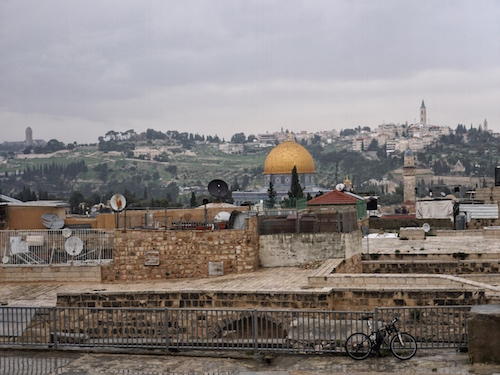“Do you think Jesus had 6-pack?”
It was a frivolous but genuine question. As someone completely new to the bible, I had lately grown to become fascinated by how much the ancient compilation of stories lives on in today’s modern world – something I never considered until picking up a few books set in Israel as background reading for my upcoming trip – books like James Kugel’s How to Read the Bible and Lesley Hazleton’s Mary: A Flesh-and-Blood Biography of the Virgin Mary, obvious outliers in my predictable book list.
Yet each time I had marked a date on my calendar, it had been an unintentional point of reference to Jesus’ birth. Although later on, I was perplexed to discover the actual year of Jesus’ birth remains unknown – assumed to be somewhere between 6 BC and 4 BC. One would think a year set Before Christ would be during a time when Jesus was not around yet! With this, it dawned on me that Jesus was likely not even born on Christmas Day, a tradition I came to realise started only hundreds of years later.
I knew then, that my trip to Israel was going to challenge assumptions and bring about revelations. To illustrate my appalling level of ignorance, Solomon to me before this always alluded to one of my favourite outdoor brands (even then, it’s spelt Salomon). Also, I never grasped the fact that the David in ‘David and Goliath’ was an actual person. Well, kind of – as this remains a contentious issue. There is still no robust archaeological evidence that proves the actual existence of David, the first king of Israel and father of King Solomon, although as recently as 1867, an excavation had uncovered a possible site for the City of David, revealing findings consistent with biblical anecdotes. The exciting discovery included steep tunnels of the Warren’s Shaft system, which may have been the same ones King David’s soldiers used to conquer ancient Jerusalem over 3,000 years ago, as well as tunnels carved later by King Hezekiah, the 13th successor of David as king of Judah at Jerusalem. Today, water from the Gihon Spring continues to flow through the tunnels and during our visit, we got to wade through the shallow waters, following the footsteps of biblical soldiers with our bare feet.
But I’m getting carried away. So did Jesus have 6-pack? Thankfully, my friends on the trip did not dismiss my question, instead taking me seriously enough to launch into a debate of its likelihood. One thing for sure, this thought must have crossed the minds of many others for centuries – because how else would painters and sculptors been able to accurately depict the scene of Jesus on the crucifix?
Our travel group of five was a mixed bag. There were the biblically idiotic and clueless agnostics, who occasionally prayed for miracles and wished to believe in something larger than life (that’s me). We had one history-loving skeptic who could at least grasp the timeline of King Herod, Byzantine, Crusaders and Ottoman Empires in the right chronological order. Then, of course, there were the proficient Christians filling in the gaps on biblical history, trying their best to win over our minds through logic but deep down already knew it was not hard but heart knowledge that is essential for that leap of faith.
We concluded that Jesus probably did have 6-pack, but not because he was buff and did abs-ercises, but because Jesus – like most civilians of his time – was poor and likely emaciated. This was why his teachings had been extremely relevant and relatable back then. He was a champion of the poor (and those labeled as sinners), openly rejecting the extravagant, ostentatious rituals of the Jewish High Priests. Six-pack or not, Jesus was certainly full of charisma and possibly very charming and good-looking.
Little did we know that we would soon find ourselves staring at an original painting of Virgin Mary and Jesus Christ himself, believed to be created by St Luke. This piece of artwork, housed in the Syriac Orthodox Monastery of Saint Mark in Jerusalem, was as close one could get to an actual photo of these two figures, because the painter himself had seen them both in real life. In fact, the face here on the baby in Mary’s arms had been superimposed with the adult version of Jesus.
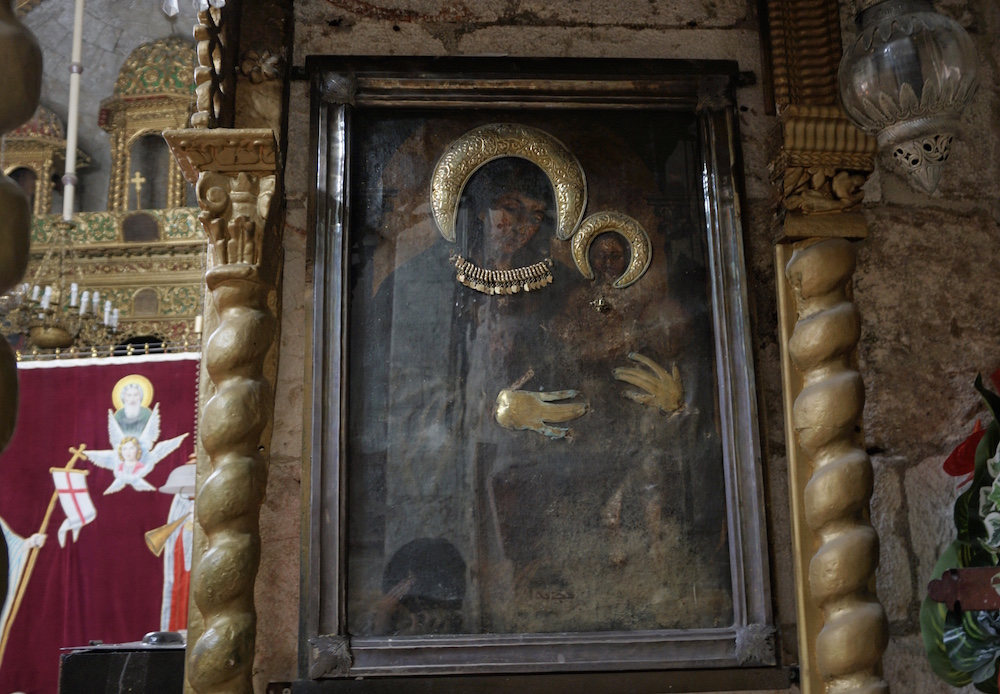
The image was a far cry from the typical paintings of an often fairer-looking duo from the Renaissance, ones I’ve gotten so used to seeing in the Louvre or on the walls of grand cathedrals across Europe. Even right here in Jerusalem, the birthplace of Christianity, the religion has experienced immense divergences from its humble beginnings. For instance, the aforementioned Monastery of Saint Mark is just one of many contenders for the site of the Last Supper, the other main one being the Cenacle. This was just the tip of the iceberg when it came to clashes within the Christian faith. As we already know, Jesus had been a preacher against lavishness, but fast-forward 2,000 years later the cathedrals we see today are nothing but, with an increasing number of factions that sometimes escalate into conflict.
Perhaps the most ludicrous symbol of the deep divisions within Christianity is none other than the Immovable Ladder in the Holy Sepulchre Church. This is no ordinary church. It is the holiest site in the Christian world, built over where Jesus is believed to have been crucified, and the tomb of his resurrection. The ladder, though, could not have been more ordinary. Left accidentally on the window ledge by a mason who forgot to keep it after doing restoration work, it has since remained in the same spot for almost 300 years (aside from being illegally removed twice). The reason? The six Christian groups sharing claims to the church just cannot agree on what to do with it.
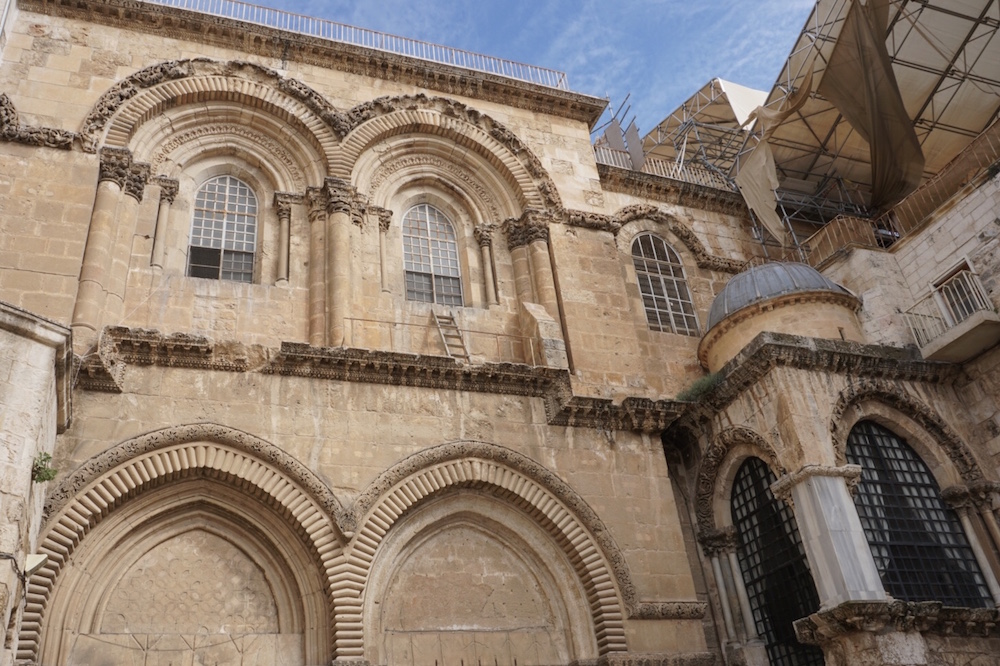
Because of the church’s sanctity and as an attempt at fairness, the world’s six major Christian sects – the Roman Catholic, Greek Orthodox, Armenian Apostolic, Syriac Orthodox, Coptic Orthodox and Ethiopian Orthodox, jointly own the Holy Sepulchre Church. This means that no one cleric may move any property (example, ladder left on ledge by mistake) without the consent of the other five. Given a long history of disagreements including various physical brawls between these holy men, the ladder is not going anywhere. True story – search ‘punching monks Jerusalem’ on YouTube and you will find plenty of videos that, erm, pack a punch.
In a twist of fate, the key to mediation lay – literally – in the hands of Muslims. No, I’m serious. Every morning, the doors of the Holy Sepulchre Church, the most sacred place for Christians, are unlocked by the Nusseibehs and Joudehs, two Muslim families who act as custodians of the church. It appears there is no other peaceful way of guaranteeing impartiality between the different Christian sects.
As we stepped inside the church, visible signs of rivalry continued. Even my untrained eye could observe a decorative dissonance across different parts of the church. Intricate mosaics adorned the walls of the Catholic Chapel while elaborate, shiny oil lamps hung from the roof of the Greek Orthodox Chapel. Downstairs, the Syriac Chapel remained in a sorry state of disrepair. We peered through its humble arched doorway and watched an ongoing mass conducted by Syrian priests in Aramaic, the 3,000-year-old language believed to be the spoken language of Jesus. Simple textile fabrics draped over its blackened walls, hardly concealing the remnants of a fire in 1808 that had damaged most of the church. While the rest of the building have since been restored, the Syriac Orthodox Church did not have the authority to clean up the badly burnt walls – because even that would be a form of official acknowledgement of their ownership, something that is still contested by the Armenians.
The old fire destroyed most things, but one particular artwork survived – a 12th-century medallion of the Ascension of Jesus. The only surviving Crusader mosaic of the church, it remains on the ceiling of the Catholic Chapel today. If this was God trying to make a point, it left a lasting impression.

“So, how do you feel about being here?” I quizzed the faithful in my group.
To them, religion had always been based on a personal relationship rather than a form of public expression. Here, long queues formed at the Golgotha to touch the rock of Calvary, the original bedrock believed to be where Jesus had been crucified. Crowds gathered to enter Jesus’ empty tomb, now covered with a marble plaque to prevent further damage to the site caused by moved pilgrims who remove bits of the rock as souvenirs. Selfie sticks were spotted in the line as people entertained themselves during the wait by snapping grinning faces against the holy backdrop. At the slab of rock on which Jesus may have been anointed, pilgrims knelt down and repeatedly rubbed their bible, bags and belongings against its entire length. I, too, followed suit by placing both my hands on the smooth surface (well, one could do with extra blessings). It was greasy and smelled of baby oil.
Despite the busyness that surrounded us, I was moved, fascinated and overwhelmed all at once. At the same time, it felt intrusive to witness pilgrims express their deep faith in such an emotional and completely unadulterated manner.
I have always thought it is in the nature of humans to contemplate about religion. Our brains seem hardwired to believe in something larger than ourselves – a supernatural force that explains the inexplicable, assuages our deepest fears and grief, and answers one of life’s greatest questions – what is the meaning of life? From an evolutionary perspective, there are just so many benefits. Shared experiences foster bonding within a close community. Performance of rituals offer perceived power over an otherwise uncontrollable outcome. A heaven helps cope with death.
While Israel is sometimes referred to as the cradle of modern civilisation (and monotheism), religions have existed in different expressions – simultaneously – across most societies in the world. The Maoris in New Zealand believe in gods of the sky, earth, rivers and mountains. Followers of Taoism, a religion that originated in China, too, worship many different deities, including their ancestors. Hinduism – possibly the world’s oldest religion – instead, believes in samsara, the continuous cycle of life, death and reincarnation, and karma, the universal law of cause and effect.
As different belief systems are cultivated and proliferated, it is impossible to ignore their influence on each other. Even in the Christian Old Testament and Jewish Torah, there are passages that appear to acknowledge other gods worshipped by the rest of the world, in order to emphasise Israel’s privileged place in the world as the Lord’s own portion, the chosen people of God (who were also the authors of the Bible).
“When the Most High established nations and split up the sons of men,
He fixed the boundaries of peoples according to the number of gods.
But the LORD’s own portion is His people, Jacob His allotted share.”
Deut. 32:7-9
Then, there is the Code of Hammurabi, a well-preserved Babylonian code of law from ancient Mesopotamia that illustrates the concept “an eye for an eye, a tooth for a tooth”. It bears a striking resemblance to the Ten Commandments, yet predates the time of Moses by a few hundred years. Separately, the Tablet of Gilgamesh caused a similar sensation when its content was first read in the 19th century, due to its startling similarity to the Flood story in the Book of Genesis. The tablet describes how the gods sent a flood to destroy mankind, but one of them, Ea, revealed the plan to Utu-napishtim whom he instructed to build a boat to ensure the survival of humans and animals.
Whether or not their alikeness is related, we may never find out. It does, however, demonstrate the possibility of similar narratives occurring in parallel, influenced by prevailing cultures (regardless of divine inspiration).
The Bahá’í Faith roughly builds on this concept by teaching the value of all religions, and the unity and equality of all people. I only came across this peaceful – and somewhat unconventional – religion after a stopover at the beautiful Bahá’í Gardens on Mount Carmel in Haifa, Israel. Its Persian founder, Baha’u’llah had been banished to one of the Ottoman Empire’s most infamous prison in Akko (Acre), where he spent much of his final 24 years of life looking out the window at Mount Carmel across the bay. Baha’u’llah taught that religion is orderly and progressively revealed by one same God through Manifestations of God, including Buddha, Jesus and Muhammad. For ardent followers of the three major monotheistic religions that originated from Israel, this concept would be unthinkable.
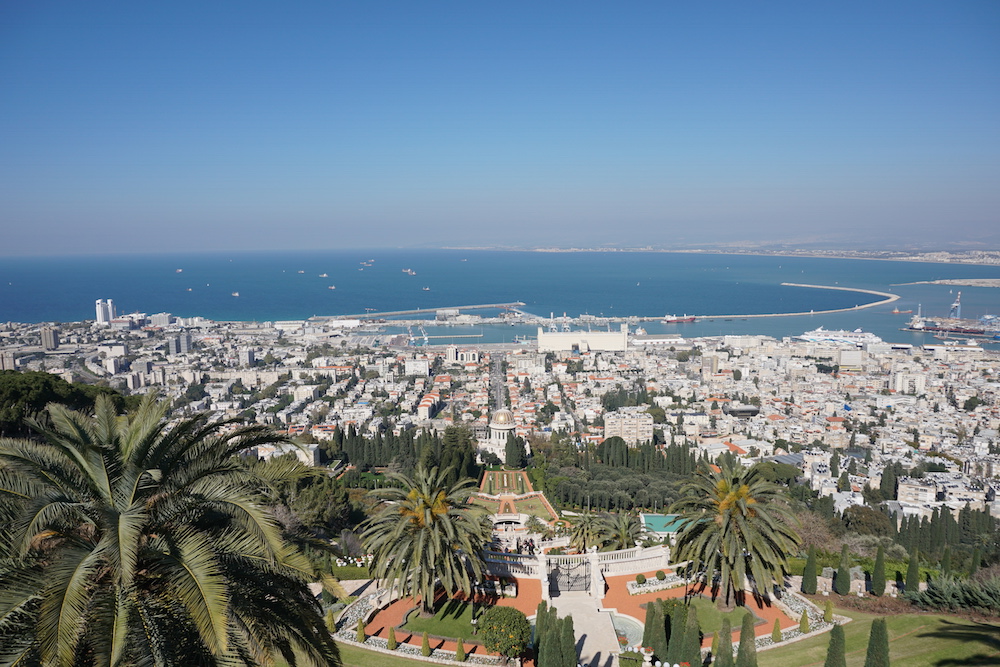
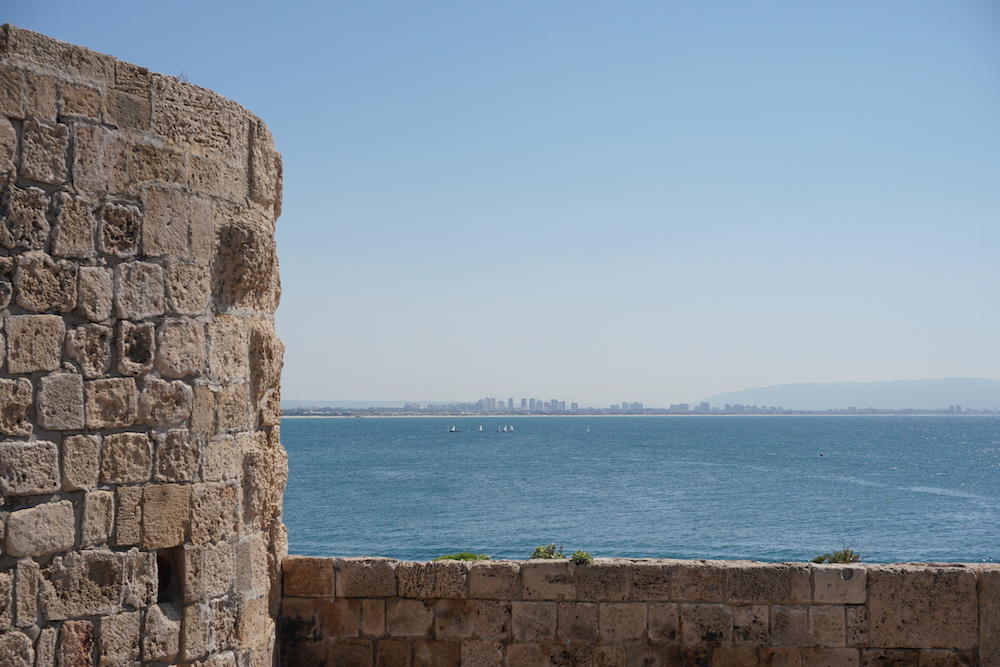
Back in modern Jerusalem, the lines that segregate each religion continue to be drawn. The Old City of Jerusalem today, is a densely populated walled city divided into four uneven quarters – the Jewish, Muslim, Christian and Armenian quarters. Living in a space of merely 0.9 square kilometres, the residents here keep to their designated areas as much as possible. Many kids are sent to religious schools so there is minimal interaction even between the children. After all, this place was at the heart of the Arab-Israeli conflict.
For thousands of years, the Temple Mount in Jerusalem has been venerated as a holy site, in Judaism, Islam and Christianity alike. According to the Bible, Abraham was told to offer his son Isaac here as a sacrifice. It is believed to be the site of King Solomon’s First Temple and the rebuilt Second Temple – the holiest of places for Jews. According to the Quran, it’s the spot Prophet Muhammad ascended to heaven. This was also where Jesus challenged the Pharisees, leading to his crucifixion.
Presently, the Temple Mount is managed by the Muslim community, but remains one of the most contested religious sites in the world. Now an Islamic Shrine, non-Muslims are banned from praying inside – including the Jews who hold this place so close to their heart. The closest they can get is the Western Wall, the ancient retaining wall border nearest to the former Second Temple. This is the holiest place Jews are permitted to pray today, and sometimes little pieces of prayers are stuffed in between the cracks of the Wall to get the message across.
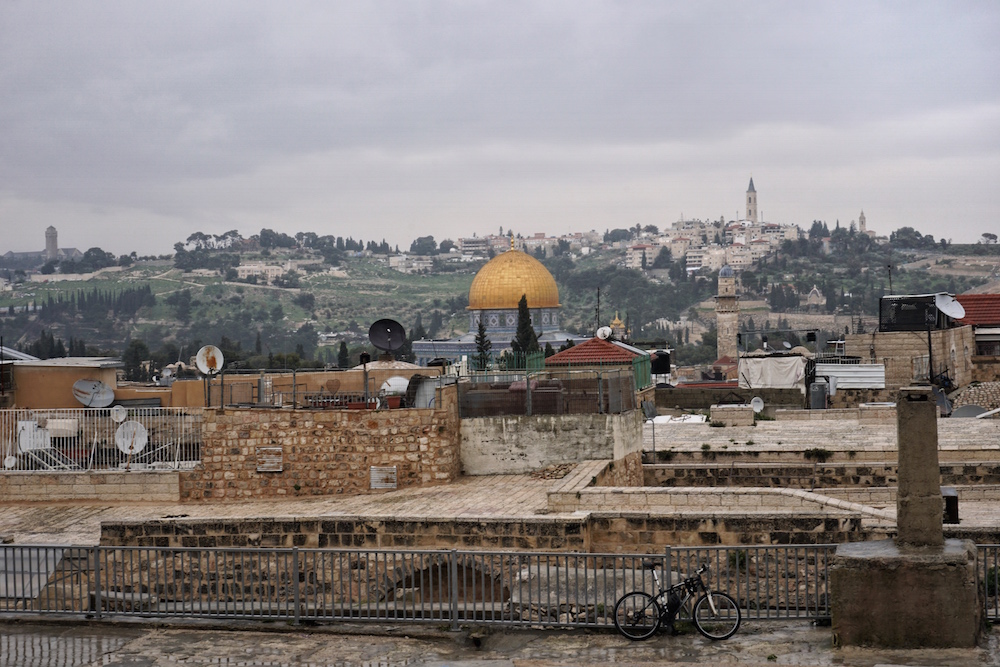
Security here was visibly higher. Armed Israeli policemen and policewomen patrolled the entire old city, but there was an increased presence around the borders. The atmosphere at the moment, though, was generally relaxed. Over the course of time, Israel has experienced sporadic periods of intensified violence, but thankfully, during our visit, it had been considered peacetime. During a tour of the old city, while our Jewish guide had been explaining the significance of various sites, we even received lively commentary – unsolicited – from a Muslim bystander.
“Prophet Muhammad,” he had cheekily corrected our guide, who had left out the salutation used by Muslims when addressing the prophet.
Outside the walls of the old city, life in contemporary Jerusalem moves on. One morning, I woke up early enough to go outside for a jog before daybreak. Pounding down Jerusalem’s paved streets in the dark, I watched the city around me come to life. A shopkeeper pushed his rattling trolley across the road, punctuating the peace as he delivered fresh produce onto his shelves for the day. Men and women started to emerge in a variety of dress codes – including formal suits, fashionable coats, trendy leggings, heels, hijabs and the traditional Jewish Orthodox Hasidic garb topped with black fedora hats. Most of them looked like they were on their way to work. In the distance, a singular bell sounded. It was the familiar ring of an incoming tram, ubiquitous in many European cities. At that moment, Jerusalem did feel just like another working city in Europe.
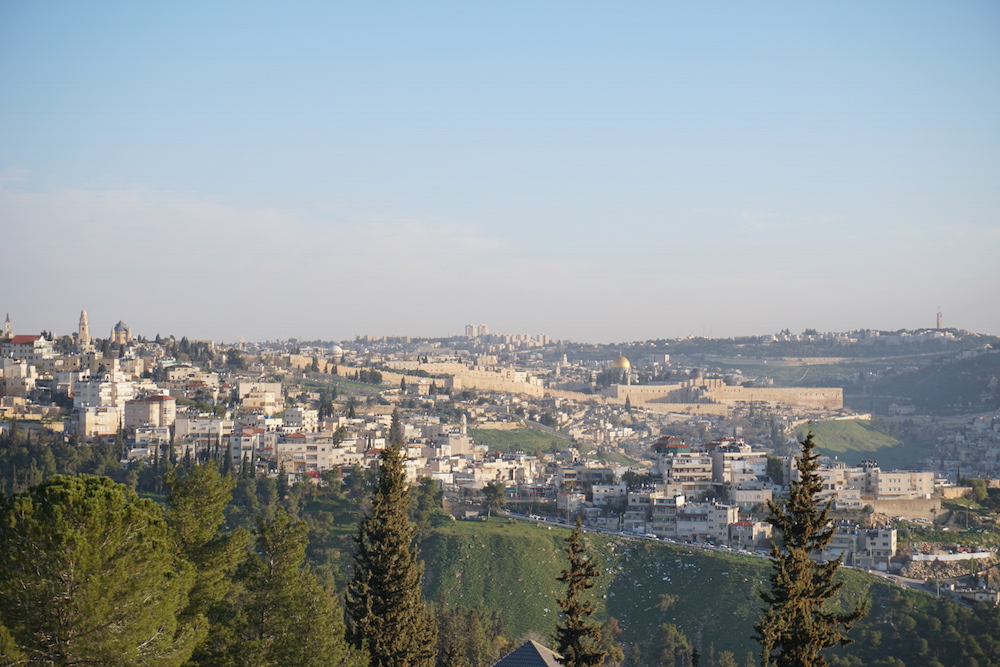
As I ran along the street lamps – lights now off with the sun coming up – different election posters caught my eye. In about a month, Israelis would vote for their next government. This was a critical period for each of the whooping 13 major political parties, all vying for a share of allegiance from its population of 9.0 million people. The Israeli parties were diverse and polarising – including representatives of very specific ideologies like Ultra-Orthodox Judaism, Islamism, Zionism and Anti-Zionism. Politics and religion, I realised, were inseparable here.
I couldn’t help but draw comparison with my own government’s policies back home in Singapore. We, too, are a small nation of multiple cultures, races and religions, who tend to take for granted that living harmoniously is a default way of life. What appeared to be a miracle on the surface, had been the outcome of carefully, cleverly designed policies. Some laws in Singapore are constantly subject to public criticism, like the enforcement of minority quotas in both public housing apartment buildings and Group Representative Constituencies (GRCs) of electoral divisions. However, after encountering the extreme version of a society that draws physical lines between each other, I truly grasped the importance of having such measures in place.
Despite Israel’s complicated political situation, the warmth and hospitality we’ve received from the locals so far have been nothing short of exceptional – from Jews and Arabs alike. Never have I once felt unsafe during the trip, even as a female running in Jerusalem alone at dawn. In fact, I spotted several solo runners along the way, exchanging smiles and subtle nods as we passed each other. Out in the countryside, while hiking the Jesus Trail, we had received countless acts of kindness from Israelis. Random strangers, including cars on the road, stopped to help if we appeared lost. One Airbnb host emptied her pantry to offer us free food when we arrived, starving, in a town where all the shops were closed due to Shabbat. When there had been a screw-up with an accommodation booking, the apologetic host went out of his way to ensure we had a back-up roof over our heads that night.
In those moments of gratitude, I have to admit, it was almost tempting to view them as miracles, planted along the way by an omnipresent force watching over us. Then again, that would be giving ourselves way too much credit (to warrant such special attention) and too little credit to the people who were genuinely being kind to us. I reminded myself – we need to have faith in humanity too.
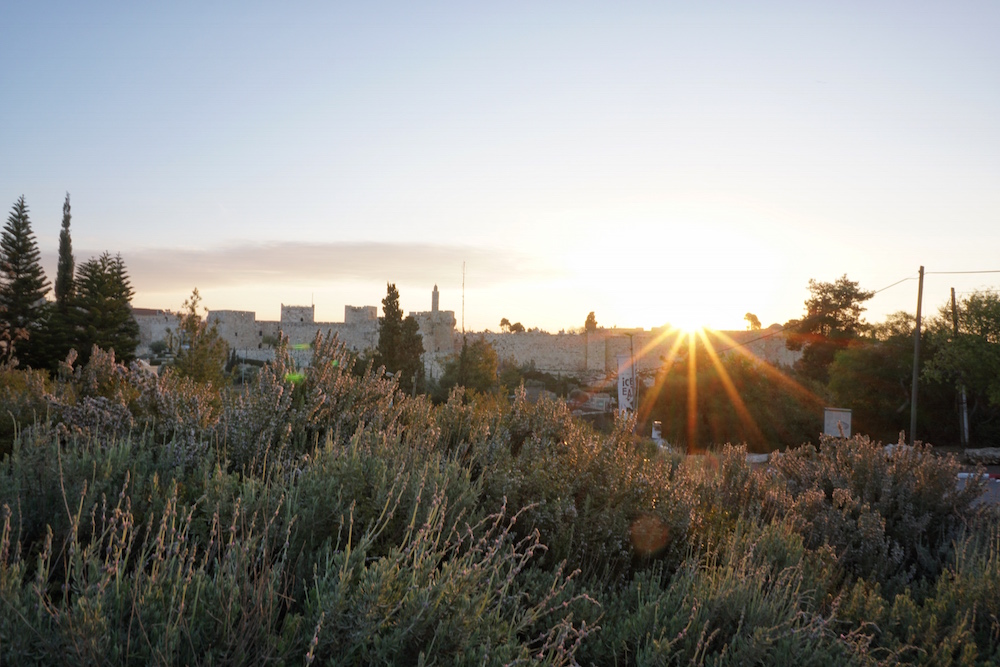
The sun was now peeking over the ancient walls of Jerusalem. I stopped in my tracks, took in the crisp air and let the warm rays bounce on my cheeks. Looking over the old city and its layers – literally built on top of each other – I couldn’t help but marvel at the beautiful complexities of our world, and what a true masterpiece it was.
Andrew Newberg, a neuroscientist who studies the brain in light of religious experience, concluded that “if you contemplate God long enough, something surprising happens in the brain. Neural functioning begins to change. Different circuits become activated… new synaptic connections are made, and the brain becomes more sensitive to subtle realms of experience. Perceptions alter, beliefs begin to change, and if God has meaning for you, then God becomes neurologically real.”
Perhaps, that is what heart knowledge is about. After all, the mind is the actual heart of our consciousness – our thoughts and feelings that make up who we are. Just as I continued my run back to the hotel that cool autumn morning, the circuits in my brain, too, could have been performing a workout in parallel, slowly restoring my faith in humanity and the universe.
